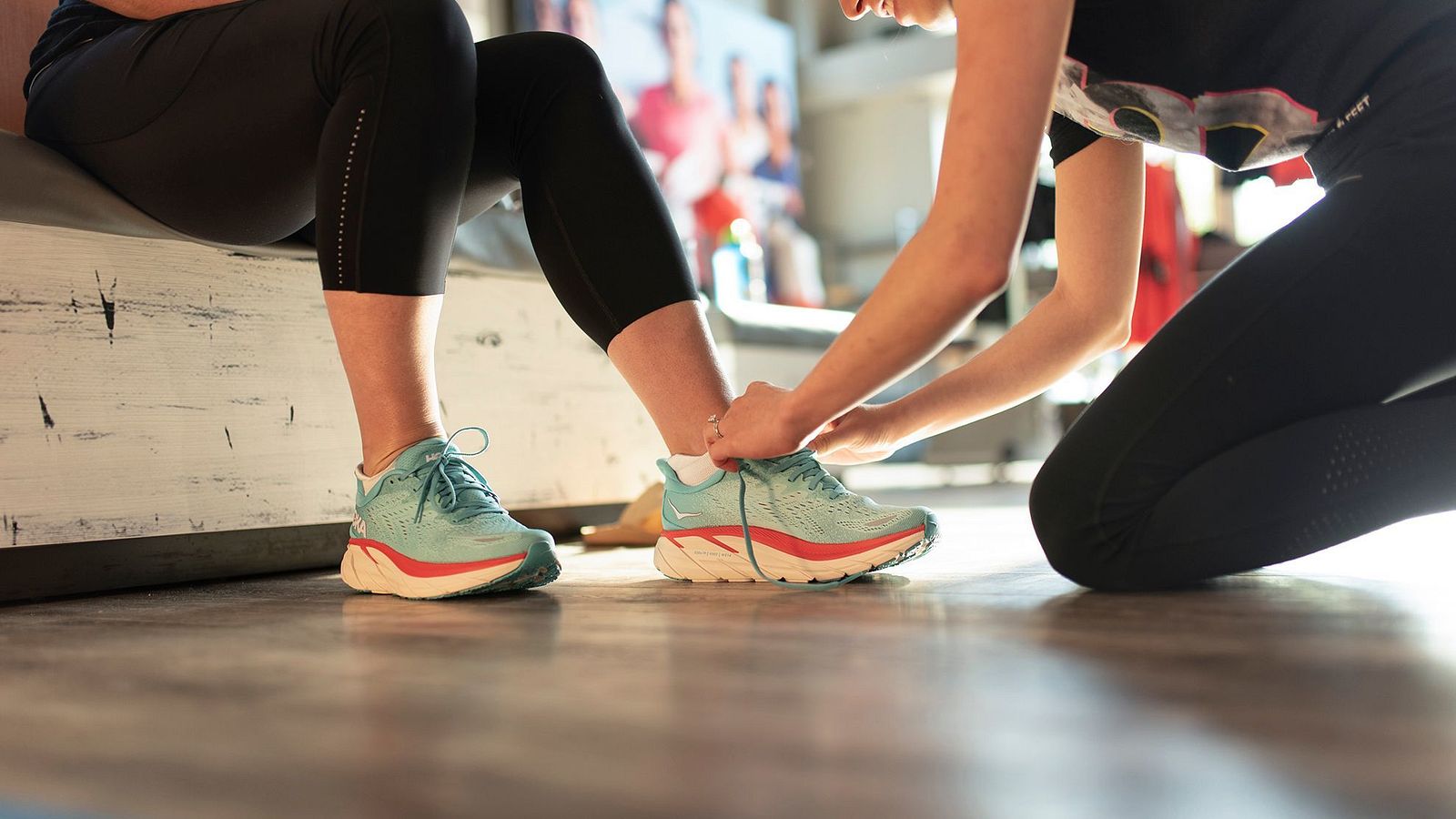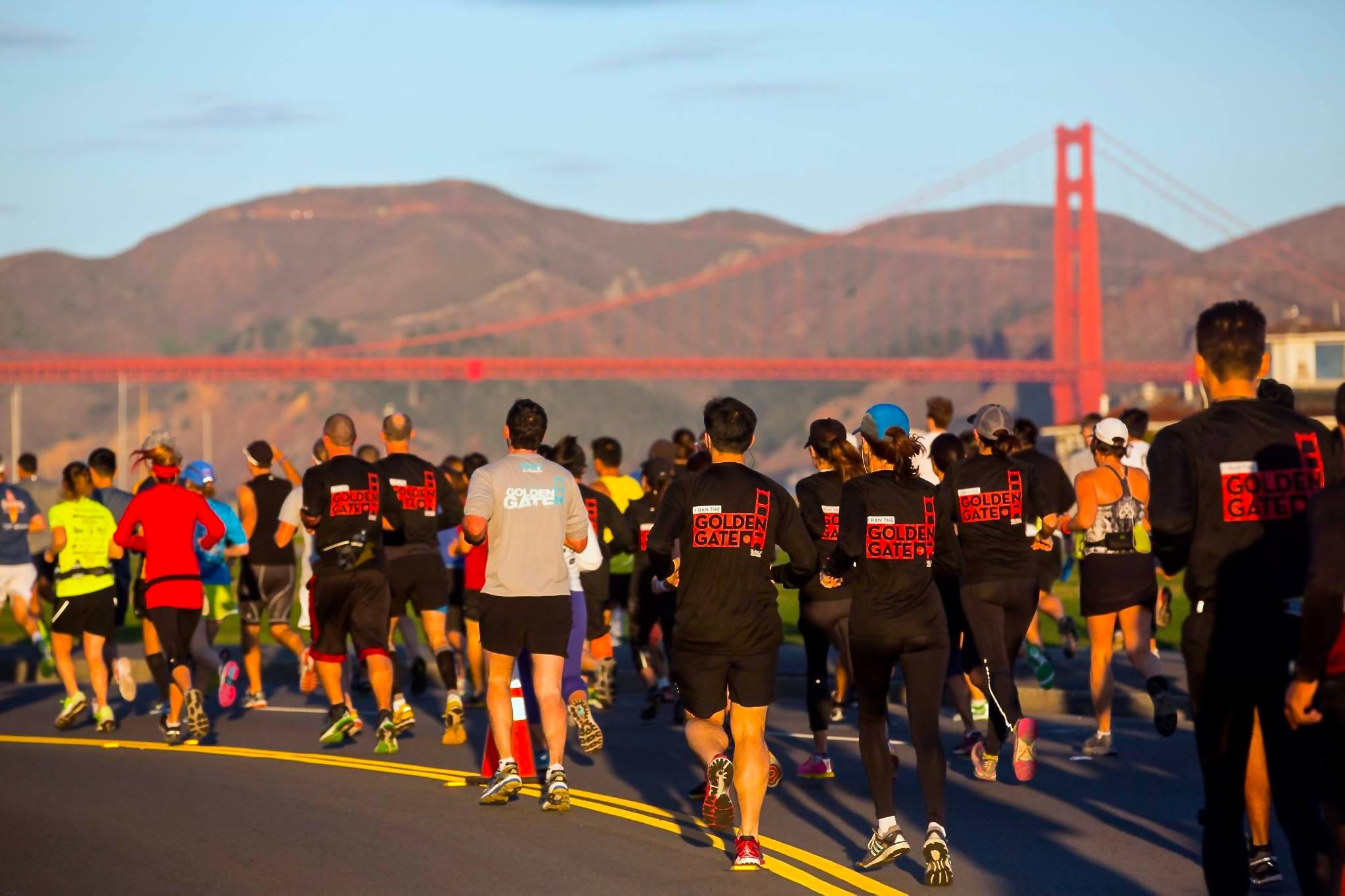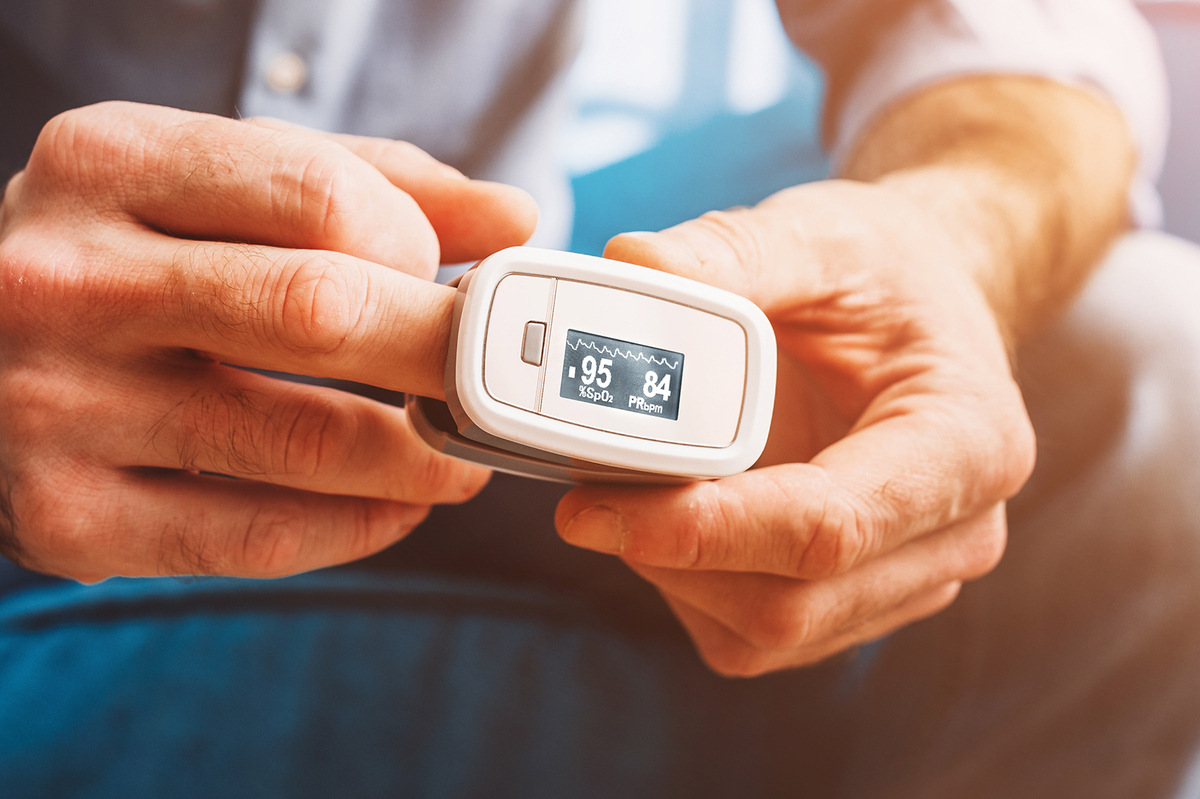Home>Misc>Featured>How Does Remote Camera On Fitness Tracker Work
Featured
How Does Remote Camera On Fitness Tracker Work
Modified: January 2, 2024
Discover the innovative Featured remote camera on fitness tracker. Learn how this feature works and capture stunning moments with ease.
Introduction
With the growing popularity of fitness trackers, people are becoming more conscious of their health and fitness goals. These wearable devices offer a wide range of features, from counting steps and tracking heart rate to monitoring sleep patterns and calculating calories burned. One fascinating feature that many fitness trackers now offer is the remote camera function.
A remote camera on a fitness tracker allows users to control and capture photos or videos on their smartphone without physically having to touch it. This functionality has revolutionized the way we take pictures, especially in situations where it may be difficult to hold the phone or press the shutter button. Whether you’re capturing a group photo, a stunning landscape, or documenting your workout progress, the remote camera feature on a fitness tracker can be a game-changer.
In this article, we will explore how the remote camera on a fitness tracker works, the benefits it offers, and how to make the most of this feature.
Let’s dive in!
What is a fitness tracker?
A fitness tracker, also known as an activity tracker or a fitness band, is a wearable device designed to monitor and track various aspects of your physical activity and health. It is typically worn on the wrist like a watch and comes with a variety of sensors that collect data and provide valuable insights into your daily fitness routine.
These devices have become incredibly popular as they offer a convenient and accessible way to monitor your fitness goals and track your progress. Whether you’re a fitness enthusiast or simply looking to lead a healthier lifestyle, a fitness tracker can be a valuable tool to help you stay motivated and on track.
Most fitness trackers are equipped with features such as step tracking, distance monitoring, calorie counting, sleep tracking, heart rate monitoring, and even GPS functionality. They use a combination of accelerometer, gyroscope, and heart rate sensors to collect data on your movements, heart rate, and sleep patterns. This data is then analyzed and presented to you through a companion app on your smartphone or a web-based dashboard.
One of the key benefits of a fitness tracker is its ability to provide real-time feedback and insights into your daily activities. By wearing a fitness tracker, you can easily see how many steps you’ve taken, how many calories you’ve burned, and how well you’ve slept. This information helps you make informed decisions about your fitness routine and allows you to set achievable goals.
In addition to tracking your activity levels, fitness trackers often offer additional features such as call and message notifications, sedentary reminders, and even stress monitoring. These features aim to provide a holistic view of your health and well-being, helping you make positive changes in your lifestyle.
Now that we have a clear understanding of what a fitness tracker is, let’s explore the fascinating world of the remote camera feature.
What is a remote camera on a fitness tracker?
A remote camera on a fitness tracker is a feature that allows you to control the camera on your smartphone using your fitness tracker. Instead of physically touching your phone to capture a photo or start recording a video, you can use the remote camera feature on your fitness tracker to do so effortlessly.
This feature is particularly useful in situations where you need to take group photos, capture scenic landscapes, or document your workout progress without the need for a selfie stick or relying on someone else to take the photo for you. With a remote camera on your fitness tracker, you can be in complete control of your photography.
To use the remote camera feature, you need to ensure that your fitness tracker is connected to your smartphone via Bluetooth. This allows the fitness tracker to communicate with the camera app on your phone and perform actions such as taking photos, recording videos, and even accessing the camera’s settings.
It’s important to note that the availability of the remote camera feature may vary depending on the brand and model of your fitness tracker. Some fitness trackers have a built-in camera, while others rely on the camera on your smartphone. Regardless of the specific implementation, the remote camera feature can enhance your photography experience and add convenience to capturing those memorable moments.
Now that we understand what a remote camera on a fitness tracker is, let’s explore the benefits it offers.
Benefits of a remote camera on a fitness tracker
The remote camera feature on a fitness tracker brings several benefits that can enhance your photography experience and make it more convenient. Let’s explore some of the key advantages:
1. Hands-free operation: With the remote camera feature, you no longer need to physically hold your phone to take a photo or record a video. This is especially helpful when you’re in a group setting or engaging in physical activities where it’s impractical to hold your phone while capturing the moment. You can simply use your fitness tracker to control the camera, allowing you to be more present and engaged in the moment.
2. Improved composition: By using a remote camera on your fitness tracker, you can better compose your shots since you’re not limited by the length of your arm or the angle you can achieve by holding your phone. You can step back, change angles, or even experiment with creative compositions to capture the perfect shot. This flexibility allows you to unleash your creativity and capture photos from unique perspectives.
3. Group photos made easy: Taking group photos can be a hassle, especially when someone has to be left out of the picture to take the photo. With the remote camera feature on your fitness tracker, everyone can be included in the photo since you can position your phone at a distance and capture the image using your fitness tracker. This makes group photos much more convenient and ensures that everyone is part of the memory.
4. Self-documentation of workouts: Fitness enthusiasts can benefit from the remote camera feature to document their workouts and track their progress visually. Instead of relying on someone else to capture your workout sessions, you can use your fitness tracker to snap photos or record videos while you perform various exercises. This allows you to closely monitor your form, track improvements, and share your fitness journey on social media or with your fitness community.
5. Convenience and accessibility: The remote camera feature adds an extra layer of convenience by allowing you to control your smartphone’s camera with just a few taps on your fitness tracker. This is particularly helpful when you’re engaged in outdoor activities, such as hiking, biking, or running, where it might be difficult or inconvenient to take out your phone every time you want to capture a moment. The accessibility of the remote camera feature means you’ll never miss the perfect shot.
These benefits make the remote camera on a fitness tracker a valuable tool for photography enthusiasts, fitness enthusiasts, and anyone who wants to capture moments seamlessly. Now, let’s dive into how the remote camera feature actually works.
How does a remote camera on a fitness tracker work?
The remote camera feature on a fitness tracker works by establishing a connection between the fitness tracker and your smartphone. This connection is typically done through Bluetooth technology. Once the devices are connected, you can use the fitness tracker to control the camera on your phone and perform actions such as taking photos, recording videos, and accessing camera settings.
Here’s a simplified version of how the remote camera feature works:
1. Pairing: First, you need to ensure that your fitness tracker and smartphone are paired and connected via Bluetooth. This is usually done through the companion app provided by the fitness tracker manufacturer. The app guides you through the pairing process and establishes a secure connection between the devices.
2. Integrating with the camera app: Once the fitness tracker and smartphone are paired, the fitness tracker app integrates with the camera app on your phone. This integration allows the fitness tracker to communicate with the camera app and send commands for actions like capturing photos or recording videos.
3. Control through the fitness tracker: With the connection established and integration completed, you can now use the buttons or touchscreen on your fitness tracker to control the camera features on your phone. This includes tapping to capture a photo, starting/stopping video recording, switching between front and rear cameras, and accessing camera settings.
4. Preview and review: Some fitness trackers also offer a preview feature, where you can see a live feed or preview of what the camera is capturing on the screen of your fitness tracker. This allows you to frame the shot, adjust the composition, and ensure that everyone is in the frame before capturing the photo or starting the video recording.
It’s important to note that the specific functionality and controls of the remote camera feature may vary depending on the brand and model of your fitness tracker. Some fitness trackers may have dedicated buttons for camera control, while others may rely on a touchscreen interface.
Overall, the remote camera feature on a fitness tracker simplifies the process of capturing photos and videos by eliminating the need to physically touch your phone. This adds convenience, versatility, and the ability to capture memorable moments with ease.
Now that we understand how the remote camera feature works, let’s learn how to use it effectively.
Understanding the connection between the fitness tracker and smartphone
In order for the remote camera feature to work, there needs to be a seamless connection between your fitness tracker and smartphone. This connection is typically established through Bluetooth technology, which allows the devices to communicate with each other wirelessly.
Here is a breakdown of the connection process between a fitness tracker and smartphone:
1. Pairing: The first step is to pair your fitness tracker with your smartphone. This is done through the companion app provided by the fitness tracker manufacturer. You need to go into the settings of your smartphone and enable Bluetooth. Open the app and follow the instructions to pair the devices. This process may involve entering a pairing code or confirming a connection request between the two devices.
2. Bluetooth connectivity: Once the devices are paired, they establish a Bluetooth connection. This connection allows them to communicate with each other and exchange data. It is important to keep the Bluetooth on both devices turned on to ensure a continuous connection. However, note that keeping Bluetooth enabled on your smartphone for extended periods may impact battery life.
3. App integration: The companion app of the fitness tracker integrates with the camera app on your smartphone. This integration enables the fitness tracker to have control over the camera functions of your phone. The integration process may vary depending on the brand and model of your fitness tracker, but generally, the app will guide you through the necessary steps to ensure proper integration.
4. Functional compatibility: It’s important to note that the remote camera feature may not be available on every fitness tracker or smartphone. Depending on the specific models, there may be limitations or differences in the functionality of the remote camera feature. It is recommended to check the compatibility of your fitness tracker and smartphone before expecting the remote camera feature to work seamlessly.
Once the connection is established and the integration is completed, you can start using the remote camera feature on your fitness tracker to control the camera on your smartphone. This allows for hands-free control, making it convenient and easy to capture photos and videos without reaching for your phone.
Now that we understand the connection process between a fitness tracker and smartphone, let’s move on to the next section and explore how to use the remote camera feature effectively.
Steps to use the remote camera feature on a fitness tracker
Using the remote camera feature on a fitness tracker is relatively straightforward once your fitness tracker is paired with your smartphone and the necessary app integration is completed. Here are the general steps to follow:
- Ensure Bluetooth is enabled: Make sure that both your fitness tracker and smartphone have Bluetooth turned on. This allows the devices to establish and maintain a connection.
- Pair your devices: Use the companion app provided by the fitness tracker manufacturer to pair your fitness tracker with your smartphone. Follow the instructions in the app to complete the pairing process and establish a secure connection between the devices.
- Open the camera app: Launch the camera app on your smartphone. Ensure that it is in the photo or video mode, depending on what you want to capture.
- Access the remote camera feature: On your fitness tracker, navigate to the camera control feature. This can typically be found in the menu or settings section of your fitness tracker’s interface. Select the remote camera option to activate the feature.
- Control the camera: Once the remote camera feature is activated, you can start using your fitness tracker to control the camera on your smartphone. Depending on the specific model of your fitness tracker, you can tap the designated button, touchscreen interface, or use swipe gestures to trigger actions such as capturing a photo, starting or stopping video recording, switching between front and rear cameras, and accessing camera settings.
- Review and adjust: Some fitness trackers may offer a preview feature, allowing you to see a live feed or preview of what the camera is capturing on the screen of your fitness tracker. Use this feature to frame your shots, adjust composition, and ensure that everyone or everything you want to capture is in the frame.
- Save and share: Once you have captured your photo or video, it will be saved on your smartphone as usual. You can then access the media from your camera roll and share it or edit it if desired.
It’s important to note that the steps above are general guidelines and may vary slightly depending on the specific brand and model of your fitness tracker. Consult the user manual or the manufacturer’s website for detailed instructions tailored to your device.
Now that you know how to use the remote camera feature, let’s move on to the next section, where I’ll provide you with some tips for using the remote camera on a fitness tracker effectively.
Tips for using the remote camera on a fitness tracker effectively
Using the remote camera feature on your fitness tracker can bring a new level of convenience and creativity to your photography. To make the most of this feature, consider the following tips:
- Frame your shots: Before capturing a photo or starting a video recording, take a moment to frame your shot. Use the preview feature on your fitness tracker, if available, to ensure that the composition is how you want it. Consider the rule of thirds or experiment with different angles and perspectives for more interesting results.
- Experiment with timer settings: Many fitness trackers with remote camera capabilities offer timer settings. Take advantage of this feature to give yourself enough time to get into position or to include everyone in a group photo. Adjust the timer length based on your needs and the specific situation.
- Explore different modes: Some fitness trackers may offer different modes within the remote camera feature. For example, you may have the option to capture burst photos or time-lapse videos. Familiarize yourself with these additional modes and experiment with them to add variety to your photography.
- Use a tripod or stable surface: To ensure sharp photos or smooth videos, consider using a tripod or placing your smartphone on a stable surface. This will minimize any camera shake and allow you to control the camera remotely without worrying about blurriness or instability.
- Be mindful of lighting conditions: Lighting plays a crucial role in photography. Pay attention to the lighting conditions and adjust settings on your smartphone’s camera app accordingly. If needed, you can also control aspects like exposure compensation through the remote camera feature on your fitness tracker.
- Optimize camera settings: Explore the camera settings available through the remote camera feature. This may include adjusting the resolution, enabling HDR (High Dynamic Range), or selecting a specific focus mode. Experiment with these settings to capture the best possible photos and videos.
- Practice and have fun: Like any new feature or skill, using the remote camera feature on your fitness tracker may take some practice. Take the time to familiarize yourself with the controls, experiment with different scenarios, and have fun with it. The more you use the feature, the more comfortable and proficient you will become.
Following these tips will help you make the most of the remote camera feature on your fitness tracker and enhance your photography experience. Enjoy the convenience and creativity this feature brings to your everyday moments and special occasions.
Now that we’ve covered some tips for using the remote camera effectively, let’s move on to the next section where we’ll discuss common troubleshooting issues that you may encounter with the remote camera feature on fitness trackers.
Common troubleshooting issues with remote camera feature on fitness trackers
While using the remote camera feature on a fitness tracker can be a seamless and enjoyable experience, there may be instances where you encounter some common troubleshooting issues. Here are a few issues you may encounter along with potential solutions:
- Connection problems: Sometimes, the Bluetooth connection between your fitness tracker and smartphone may become unstable or disconnected. If you’re experiencing connection issues, try the following steps:
- Ensure that Bluetooth is enabled on both your fitness tracker and smartphone.
- Make sure your devices are within range of each other.
- Restart both your fitness tracker and smartphone.
- Go through the pairing process again to re-establish the connection.
- Compatibility issues: Not all fitness trackers may be compatible with every smartphone or camera app. If you’re facing compatibility issues, consider the following steps:
- Update the firmware of your fitness tracker to the latest version.
- Check the compatibility list provided by the manufacturer to ensure that your smartphone is supported.
- Try using a different camera app on your smartphone to see if it resolves the compatibility issue.
- Delayed response: You may notice a delay between pressing a button on your fitness tracker and the action being performed on your smartphone’s camera. This could be due to various factors, such as signal interference or processing speed. Here are some steps to address this issue:
- Reduce the distance between your fitness tracker and smartphone to improve the Bluetooth signal strength.
- Avoid having obstacles or physical barriers between your fitness tracker and smartphone that could interfere with the Bluetooth signal.
- Ensure that your smartphone has sufficient free memory and processing power to handle the commands from the fitness tracker.
- Inconsistent performance: If you’re encountering intermittent issues or inconsistent performance with the remote camera feature, try these steps:
- Update the firmware of your fitness tracker to the latest version.
- Make sure you have the latest version of the companion app installed on your smartphone.
- Restart both your fitness tracker and smartphone to clear any temporary glitches.
- If the problem persists, consider contacting the customer support of the fitness tracker manufacturer for further assistance.
By following these troubleshooting steps, you can resolve common issues and ensure a smooth experience while using the remote camera feature on your fitness tracker. Remember to consult the user manual or the manufacturer’s website for specific troubleshooting guidance tailored to your device.
Now that you’re aware of the potential troubleshooting issues, let’s move on to the concluding section where we summarize the key points discussed in this article.
Conclusion
The remote camera feature on a fitness tracker adds a new dimension to capturing photos and videos, offering convenience, flexibility, and creative possibilities. By connecting your fitness tracker to your smartphone, you can control the camera functions remotely, allowing for hands-free operation and the ability to capture moments that may have been challenging otherwise.
In this article, we explored the concept of a fitness tracker and how it has evolved to include the remote camera feature. We discussed the benefits of using this feature, such as hands-free operation, improved composition, and the ability to effortlessly take group photos and document your workouts.
We also delved into the process of connecting the fitness tracker to your smartphone and the steps involved in using the remote camera feature effectively. From ensuring Bluetooth connectivity to accessing the camera app and controlling the camera functions, we covered the fundamental aspects of using the feature.
Additionally, we provided helpful tips on making the most of the remote camera feature, including framing your shots, leveraging timer settings, exploring different modes, and optimizing camera settings. These tips can elevate your photography skills and enhance your overall experience with the feature.
We also addressed common troubleshooting issues that users may encounter when using the remote camera feature. From connection problems to compatibility issues and delayed response, we provided solutions to help overcome these challenges and enjoy a smoother user experience.
In conclusion, the remote camera feature on a fitness tracker is an innovative addition that enhances the photography capabilities of these wearable devices. Whether you’re capturing group photos, documenting your workouts, or simply exploring your creativity, the remote camera feature adds convenience and versatility to your photography experience.
As technology continues to advance, we can expect further improvements and enhancements to the remote camera feature on fitness trackers. With each innovation, the possibilities for capturing and sharing moments will expand, allowing us to create lasting memories in a seamless and effortless way.





